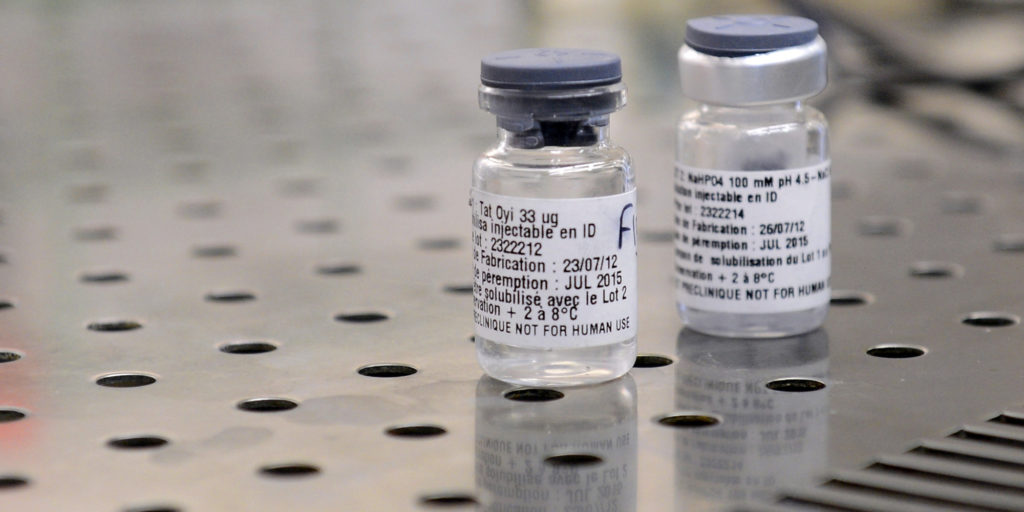33 years on, HIV vaccine remains elusive. Tola Oladimeji reports
The HIV virus was first confirmed in 1984 as the causative agent of AIDS, the novel disease that shook the medical world. And the search for an effective vaccine has been on since then. It was at first taken as sine qua non that a vaccine will soon follow, after previous successes with other infectious diseases such as smallpox, chicken pox and pertussis. In fact, the then United States Health and Human Services Secretary Margaret Heckler optimistically declared that a vaccine would be available within two years.
What would the discovery of a HIV vaccine mean for the world today?
AIDS is an immunodeficiency disease caused by the HIV virus and currently affects 36.7 million people worldwide, according to the World Health Organization.Today, life-saving treatment with HIV medicines is available to more people than ever. These drugs have greatly increased chances of survival for people living with HIV and has reduced their chance of transmitting HIV to their partners. Yet, unfortunately, in 2015 alone, more than 2.1 million people became newly infected with HIV worldwide.
Historically, disease eradication and even the halt of pandemics have been achieved most effectively with vaccines. They safely and cost-effectively prevent illness, disability, and death.
Like smallpox and polio vaccines, only a preventive HIV vaccine could help interrupt the seemingly never-ending transmission of HIV virus and save millions of lives. A HIV vaccine has a huge potential to control and ultimately end the worldwide HIV/AIDS scourge.
But the HIV Virus is a dodgy fellow
…and it replicates as fast as a prisoner on the lam. The HIV virus has evaded production of a vaccine for 30 years since its discovery. Its study has proved fascinating for many scientists, and there is still much to learn. The HIV virus is called a retrovirus, retro- because its viral processes of infecting are reversed, making a.
It even wears a suit of armor, defying opposition or conquest on every side. The virus also replicates very fast, making as many as 100 giga-copies per day. It constantly changes its shape as it multiplies also in order to fool the immune system. This devious virus also tricks the immune system to attack strongly and quickly its parts that are most variable.With all of these properties, vaccine researchers certainly have their work cut out for them.
However, producing a HIV vaccine is not Mission Impossible.
Scientists all agree that an HIV vaccine is possible, though the process may be difficult. The typical life cycle of HIV infection shows that it is susceptible to being stopped, albeit temporarily.Ten years, on the average, elapse from the time a person is infected with HIV to the time when the virus has done enough damage to warrant an AIDS diagnosis.
Additionally, there are people who exhibit an exceptional ability to shrug off HIV infection. For example, some female sex workers and male partners of HIV-positive men have remained HIV uninfected, or infected but able to control infection so that it is harmless, for many years, despite repeated unprotected sex. If we could understand and replicate what is different about their immune systems, we would have vaccines.
Again, experimental vaccines against Simian Immunodeficiency Virus, a close cousin of HIV that infects monkeys, have been shown to prevent AIDS in them and even to show signs of eliminating infection, once acquired in monkeys.
Several ways to skin a cat.
There have been several tests of HIV vaccines which showed potential at first and have been unsuccessful. The search for an HIV vaccine over the past 30 years of research has been a tale of early hopes dashed, followed by a more realistic optimism. The New England Journal of Medicine,after yet another failed study, referred to the flagging search for an AIDS vaccine as “a Sisyphean onslaught of disappointments.”
Alternative medical treatments to a vaccine do exist. There is a medication, Truvada, being used as a preventive measure for people who are at high risk of getting HIV through sexual activity. The drug is meant for use alongside safe sex practices including the use of condoms. Doctors are will test patients that they are negative for HIV before prescribing Truvada every three months.
The Highly active antiretroviral therapy (HAART) in popular use has been highly beneficial to many HIV-infected individuals since it first became available in 1996. HAART allows HIV positive people to achieve very low levels of virus thereby reducing the chances of transmission to other people.
However, because neither HAART nor Truvada does nothing to prevent the spread of HIV by people with undiagnosed infections, safer sex measures among other behavioral changes are the only tested and trusted viable path to halt the spread of HIV/AIDS.
